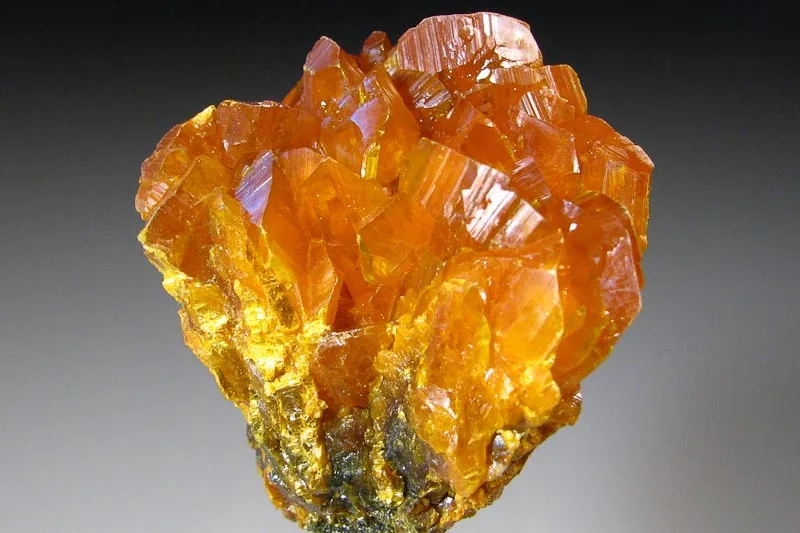
Appearance
Orpiment can occur in large or granular forms, however it usually occurs in monoclinic crystals. It’s easily recognized by its vivid orange-yellow or golden color. Orpiment crystals are arranged internally at non-right angles due to their monoclinic crystal structure.
Geographical Distribution
Although orpiment is found all throughout the world, its distribution is limited because of particular geological conditions. Several areas recognized for noteworthy deposits of orpiment are China, Peru, Romania, and Turkey. Although orpiment can be found in various nations and areas with the right geological conditions, it is not as frequent as other minerals.
History
Orpiment, derived from the Latin auri, which means “golden,” and pigmentum, which means “paint,” was a pigment utilized by ancient Middle Eastern artists. However, Western artists paid little attention to it until the 18th century, when artificial arsenic trisulfide started to be produced.
Chemical Composition
As2S3 , or orpiment, is made up of two arsenic atoms bound to three sulfur atoms. According to the Mohs hardness scale, it is comparatively easy to scratch.

Uses
Here are the historical and limited present uses and use areas of orpiment:
- Historical Use as a Pigment: In ancient art, especially in Egypt and China, pigment known as orpiment was highly prized for its golden hue. It was applied on decorative objects, texts, and paintings. But when knowledge of arsenic’s toxicity increased, its use decreased.
- Ink and Dye: In the past, ornament was occasionally used to make yellow dyes and inks. Again, health concerns have reduced the usage of this.
- Pyrotechnics: Historically, orpiment was used to produce yellow and white flames in pyrotechnics and fireworks. But nowadays, safer substitutes are favored for these kinds of uses.
- Alchemical and Medicinal Uses: Orpiment was utilized in alchemical procedures in the past, however these were frequently predicated on superstitions and mystical beliefs. Although safer substitutes have replaced it due to its poisonous qualities, it was also used in traditional Chinese medicine.
- Mineral Collecting: Because of its eye-catching yellow color and crystal formations, orpiment is occasionally collected by mineral lovers and collectors. Because of its toxicity, collectors need to handle it very carefully and take safety precautions.
- Industrial Applications: Orpiment’s uses in modern industry are restricted. Certain forms of glass, especially yellow or yellowish-green glass, can be made with it. On the other hand, substitutes free of harmful arsenic are favored.
- Geological Significance: In the context of geology, orpiment in particular rock formations can occasionally serve as a signpost for specific geological conditions, including hydrothermal mineralization. The presence of orpiment in some places may indicate the possibility of rich mineral reserves, such as gold.
Table





